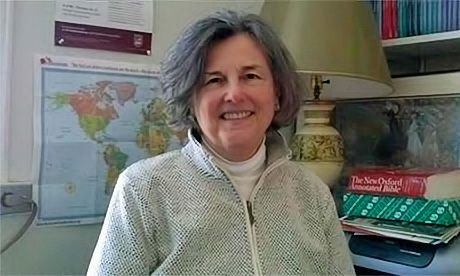The Vatican seems poised to publish a theological investigation into the diaconate that does not look kindly on women deacons.
On the other hand, reports that the Vatican has outlawed women deacons are not true—at least not yet.
The International Theological Commission approved a study on the diaconate during its meeting in Rome from Sept. 30 to Oct. 4, 2001. After news services correctly reported that women deacons were not ruled out, the commission’s general secretary, Georges Cottier, O.P., insisted that the document tends to support the exclusion of women from the diaconate.
In fact, the 70-page French document leaked to the media neither allows for nor disallows women deacons.
As a working paper, which may go before the plenarium of the Congregation for the Doctrine of the Faith, the document is a short and selective exploration of the history and theology of the diaconate.
The question of women deacons has been before the commission for at least 20 years. The original study on women deacons, requested by Pope Paul VI, was suppressed.
While that document remains unpublished, an article published in Orientalia Christiana Periodica in 1974 by then-commission member Cipriano Vagaggini concluded that the ordination of women deacons in the early church was sacramental.
What the church had done in the past, he suggested, the church may do again.
Other scholars, before and after Vagaggini, have reached similar conclusions, but the current document only refers to the debate and strenuously avoids concluding that women ever received the sacrament of holy orders.
What is unfortunately clear is that the new document is both carefully nuanced and fundamentally flawed by a need to prove its unstated point: that women never were ordained and never can be ordained.
The study omits a large body of historical-theological evidence that women were sacramentally ordained.
It also tries to argue that the diaconate’s participation in the sacrament of holy orders eliminates women, latching on to language that implies that the deacon, like the priest, is so configured to Christ that women are eliminated.
One commission member explained privately that the salient points in the ongoing conversation over the years, as the document grew from 18 to 70 pages, were:
- What did women deacons do?
- Were women deacons ever sacramentally ordained?
- Does the ordained diaconate share in the sacrament of order?
- Does the ordained diaconate share in the sacrament of order in such a way that it is part of the sacerdotal priesthood?
This last point caused deep debate within the commission.
What did women deacons do?
While the work of women deacons—always rooted in the word, the liturgy and charity—differed regionally, the fact of women deacons is undeniable.
The commission recognizes that St. Paul called Phoebe a deacon (not a deaconess) of the church at Cenechrae. But the commission ignores or relegates to footnotes significant epigraphical and literary evidence.
There is a scattershot approach in the document to what is known about ordained women, and a general attitude that all persons called deacon are male, even though women deacons of the early church were called by their job title.
The commission states at the outset, citing Cardinal Walter Kasper, that it is impossible to take a few historical facts and make an argument, yet that is clearly what it attempts even as it recognizes deaconesses as one of the two branches of the diaconate.
Over 40 years ago Cardinal Jean Daniélou, a French Jesuit, noted four ministerial areas of women deacons:
- evangelization, catechesis and spiritual direction,
- liturgical roles equivalent to porter, acolyte, lector and deacon,
- care of the sick, including anointing and
- liturgical prayer. Daniélou actually argued that women sacramentally anointed the sick, citing Epiphanius: the woman deacon is delegated by the priest to perform his ministry for him.
This raises a deeper question and underlies the quandary imbedded in the document: can women be given the power of holy orders? Continue reading
- Phyllis Zagano was appointed by Pope Francis to the Papal Commission studying the history of women deacons in the Catholic Church.
- Phyllis Zagano is author of Holy Saturday: An Argument for the Restoration of the Female, Diaconate in the Catholic Church (Herder & Herder, 2000), winner of a 2001 Catholic Press Association Book Award and of the 2002 College Theology Society.
- This opinion piece is an extract from Phyllis Zagano’s 2003 article in America.
